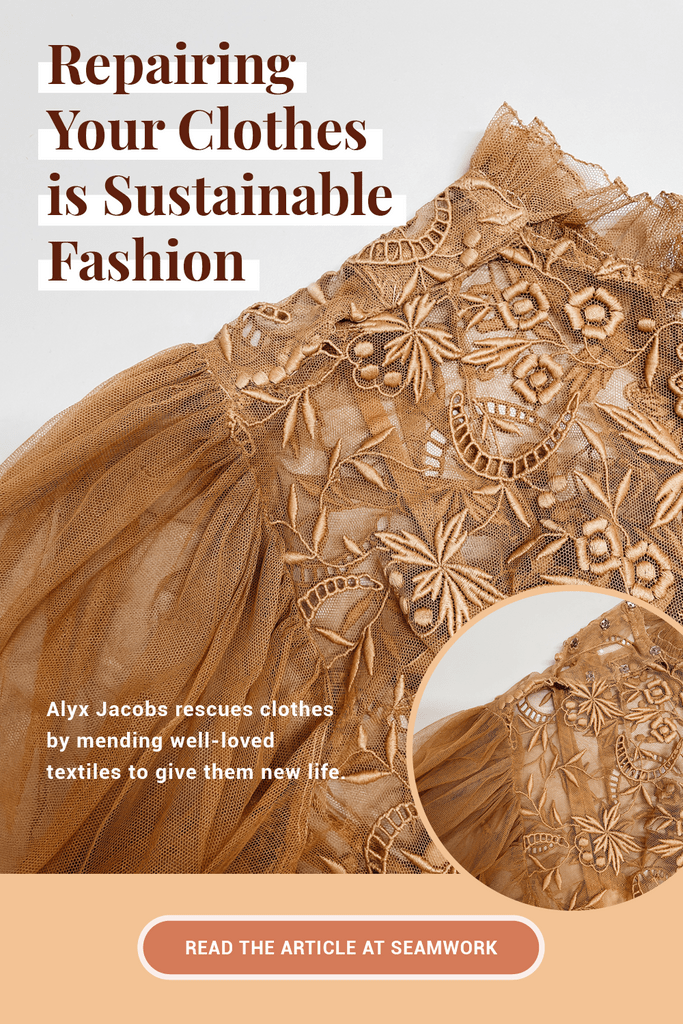Alyx Jacobs is an art director by day and a natural dyer, quilter, and mender by night.
She tries her best to live a sustainable lifestyle by growing her own food, using less plastic, and supporting local businesses. But one of Alyx’s favorite ways of practicing sustainability is through mending clothing for herself and others.
I met Alyx back in 2014 when she started down her natural dye path, and I loved seeing her art practice evolve into mending clothing. I’ve only done mending on my machine, so when I started seeing her get more into hand-mending delicate tops, sweaters, and vintage quilts, I was fascinated by the detail she put into each commissioned piece. So, I sat down with her to learn more about her craft.
Taylor: When did you start getting into mending as a craft?
Alyx: In college, I took an elective called Re-made. We would go to thrift shops, and we could only use material that we purchased at thrift shops. We would learn how to drape pieces of fabric on dress forms. Something about making clothes out of reused materials and fixing holes in clothes that already existed felt really right to me—it felt very in line with my lifestyle.
It took a few years after that class to really realize the message my teacher was really trying to spread and share. I would say the mending really started probably about three years ago. I learned about darning, and my ex-boyfriend was really hard on all of his clothes because he never bought new clothes, which, in a way, is very sustainable. But he had a pair of socks that had, like, a huge hole in the heel, and I darned it [by hand]. That was my first, and it was just embroidery thread. I hadn't invested in any yarn or any mending thread or anything like that. And yeah, that was my first introduction to it.
Taylor: What are your thoughts on visible vs. invisible mending?
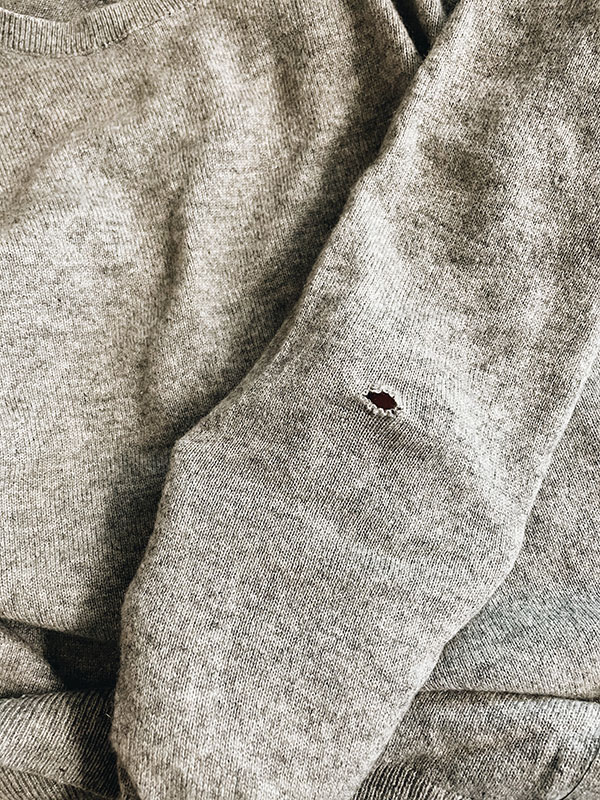
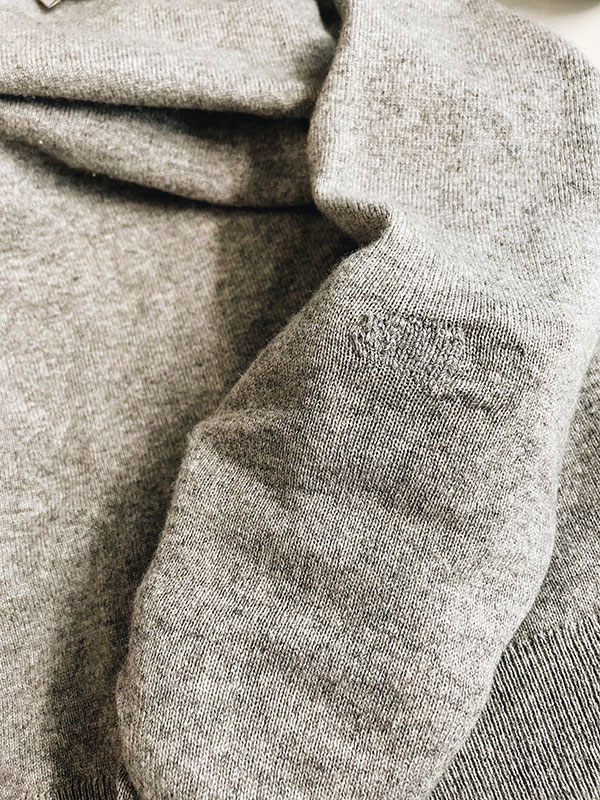
Alyx: So it is a really good challenge for me to try to make it look like it's never been mended—I love that challenge. I make little challenges in my daily life all the time just to push myself further. It is so fulfilling for me to be, like, okay, this is the hole that you see here, and I'll take a before picture, and then I'll repair it. In the after picture, you cannot tell that it was ever repaired.
Oftentimes I'll borrow a piece of fabric from another part of the garment. You can use the hem that's been rolled over at the bottom of the leg or the inside of a pocket on a pair of pants. You can borrow fabric so that it blends in, or you can easily close up holes with matching thread. I personally love the challenge of making it unseen in a very hidden repair.
I kind of think of repair and mending as rescuing these things, because a lot of people will throw them away if they saw them. They don't realize how much history is in a lot of these clothes—the sun fading and the paint on the jacket is just part of the story for me.
But I also love the beauty of seeing the chunky woven darn in something. I've also done a lot of Swiss darning. You're mimicking a knit structure, but you're stitching it yourself…you’re essentially weaving it in. You have to kind of borrow the knitted structure [from the garment] to get started and to blend it in. So underneath, there's a structure. Ladders are what they're called.
You can do it in a completely different color or you can make it match, and it hardly looks like anything has happened.
Taylor: So what's the oldest piece you've worked on?
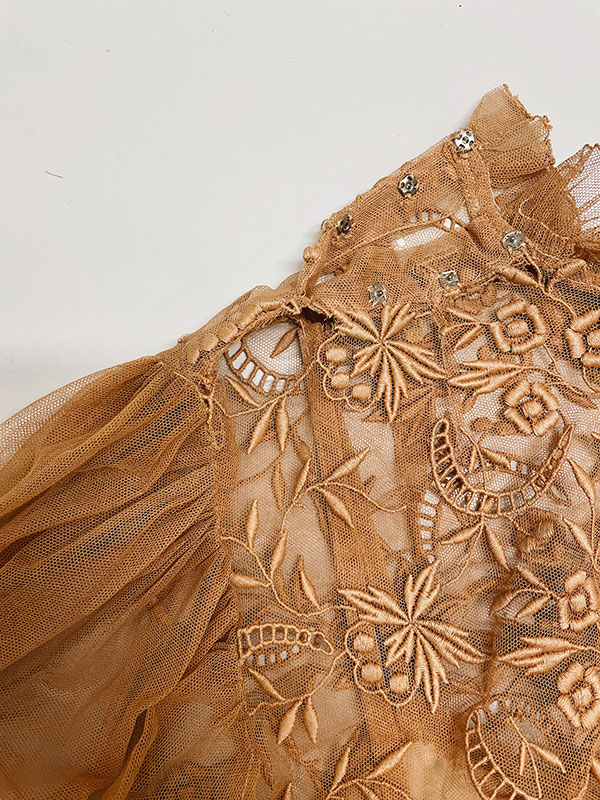
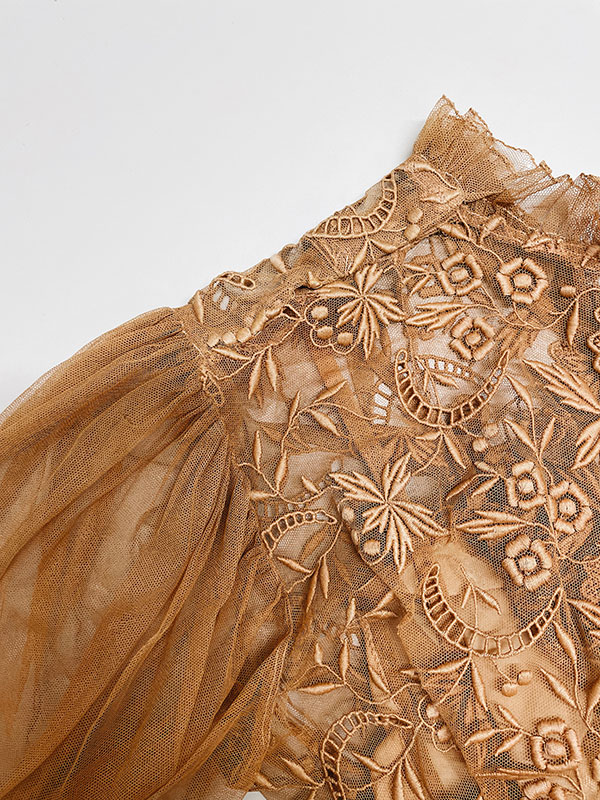
Alyx: I've worked on some Victorian nightgown pieces that were really heavy in lace. Personally, I have a piece that was a mess when I bought it. I bought it from a vintage seller, and it was her intention to fix it up, and she never got around to it. And when I went in and saw it, I was just like, this is my jacket. I have to have this.
I kind of think of repair and mending as rescuing these things, because a lot of people will throw them away if they saw them. They don't realize how much history is in a lot of these clothes—the sun fading and the paint on the jacket is just part of the story for me. And that is not a flaw. It's just something that makes it more beautiful.
I recently finished two 100-year-old quilts. [The client] told me that they were made of flour sack [fabrics]. And I hadn't used [this fabric] before, but I guess that in the 20s, flour companies started making their sacks with patterns on them, because they knew that women were using them to make garments with.
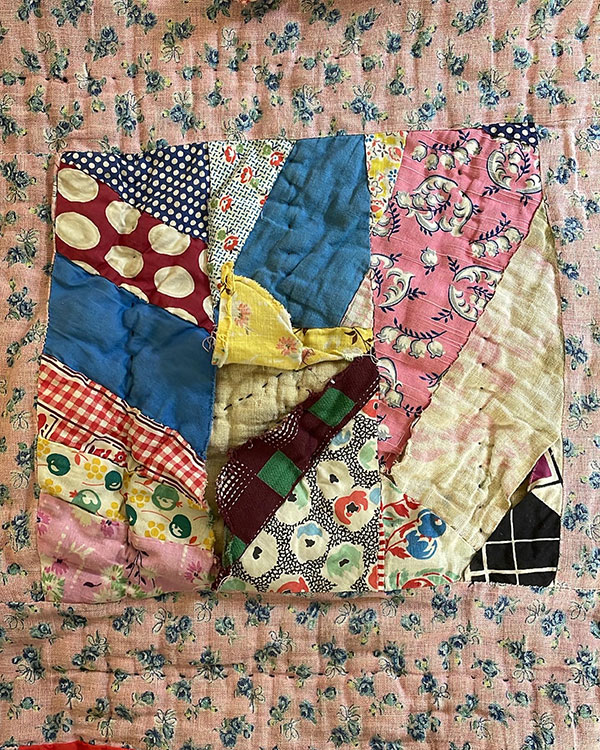
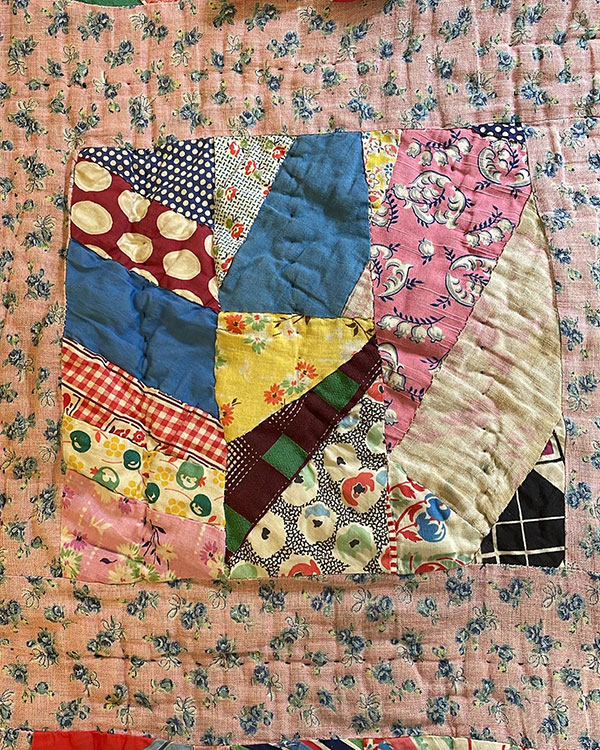
So these quilts were gorgeous. The fabric was amazing, and there was some really interesting fabric in them that looked new, looked pretty modern. Some of them had typography in them, and it was really cool. The batting was unlike any other quilt I had ever seen. I spend about a week straight reconstructing many of the blocks. I wanted to keep the quilt as authentic as I could, so I sourced some flour sack fabric from eBay, and I used that to do the repairs.
Taylor: Some of the best things that need mending have a ton of history to them. Are you ever scared to work on them?
Alyx: Yeah! I am very scared of ruining things. And I try to be really open with everybody who brings things to me that I may not be able to fix things because these pieces are 100 years old or are 50 years old or whatever. The fabric is at a point where it's just not going to hold up anymore.
I do my best to reinforce the fabric, and honestly, there have been a few times where I have burned fabric or have melted fabric, and those have all been newer, modern clothes. I've had some of my most problematic issues with newer clothes—I leave the iron too hot, and I just assume that it can handle it because the vintage clothes [I work on] can handle it most of the time. Granted, I'm working on denim and the old cottons.
Specifically, I remember a pair of modern joggers that I did for a friend, and I didn't think that they would melt. But the ass melted out of them, and I was like…well, I can repair it! But, it is scary to work on these really old pieces.
Taylor: You talk so much about vintage and old clothing. What do you think about people going out and using these items on the regular vs. preserving them in a cedar chest or plastic bags?
Alyx: I think that they should be used. These clothes were worn for so long, and they were made to be worn. So I think the fact that people are spending the money to repair them so that they can wear them is pretty awesome. Vintage is really hot right now. It's very expensive, and I definitely get wrapped up in that. I would be lying if I said that I didn't have, like, a $100 Metallica T-shirt upstairs. But I get excited about that stuff because it's history, and they're comfy, and they look cool.
So I do think that people should wear them, but people need to be careful when they wear them, and if they are going to wear them, repair them—which I think is just the cycle of it.
I now realize that the most sustainable option is to buy used, to repair what you already have, and to make your own clothes.
A lot of the stuff that I repair is workwear. If it's mended and repaired correctly, then it should hold up. And I think that's kind of the beauty of those garments… they're still functioning, and they're still wearable today.
A lot of the [clothing] that's turned out today [with fast fashion brands], those clothes aren't going to be around forever in the way that we see them. They will be, because there's plastic in them, but they're not going to be wearable in 100 years.
Taylor: What about quilts? You mentioned before that you mended older quilts. Did those clients use end up using them as quilts?
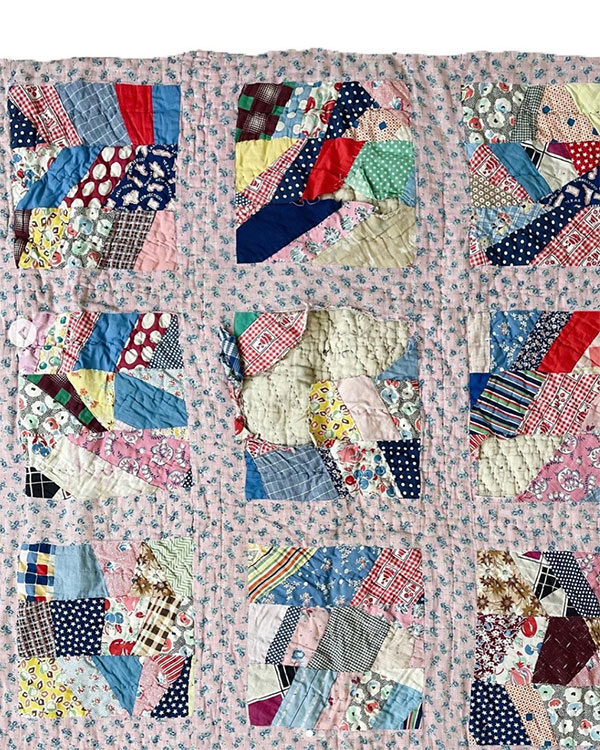
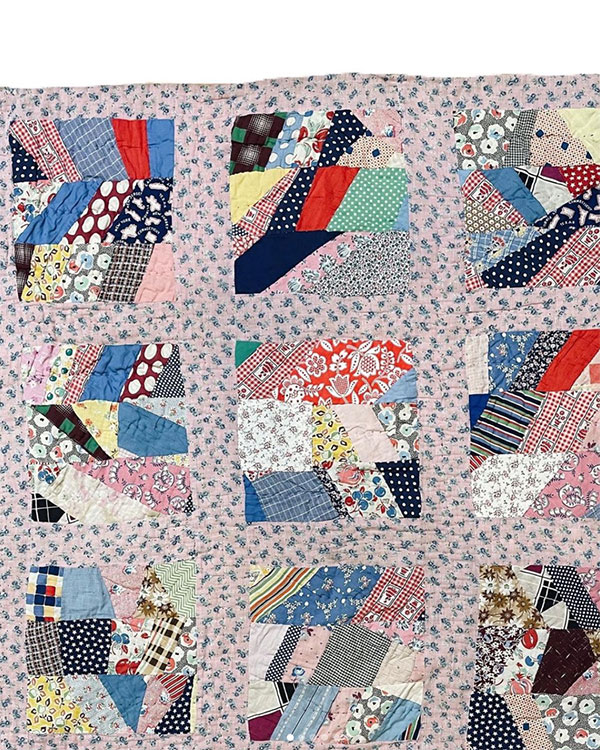
Alyx: I believe those quilts are going to be hung on a wall. Although I had washed them, they were still letting out some 100-year-old dust every time I would smack it down on the table. I don't know if I would want that on my bed, because they had been in, like, a barn somewhere. There's a lot of history in those—our skin and our animals—and that all gets in the history of the quilts, too.
I think that if they are used, it’d be like a nice little foot quilt on the bed.
Taylor: What are your personal beliefs around preserving clothing and practicing sustainability?
Alyx: I thought that sustainability meant buying from sustainable brands, which there's a facet of it that, yes. And I went crazy with updating my wardrobe with new sustainable clothes, which was expensive and counterintuitive and counterproductive. Now looking back on it, I was like, what was I doing!? That is not sustainable at all.
I now realize that the most sustainable option is to buy used, to repair what you already have, and to make your own clothes. So it took me a while to realize that and to really understand that in my sustainability journey.
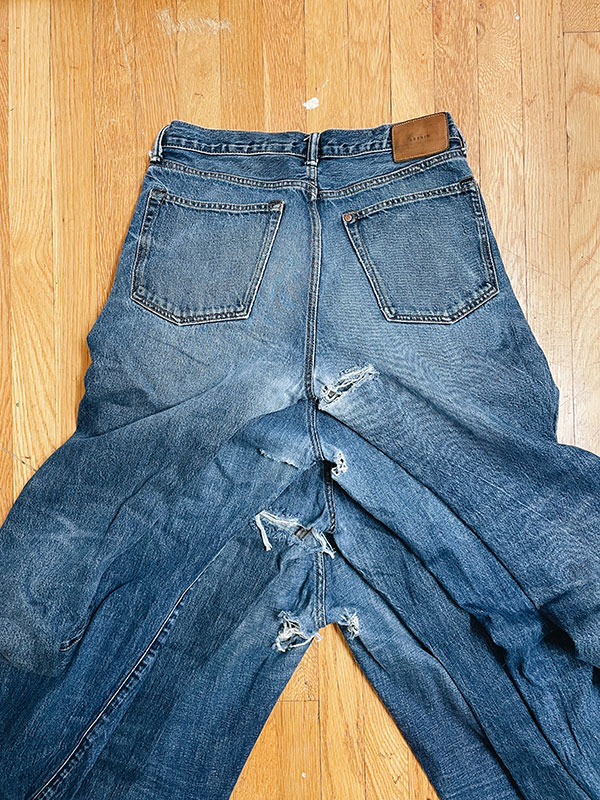
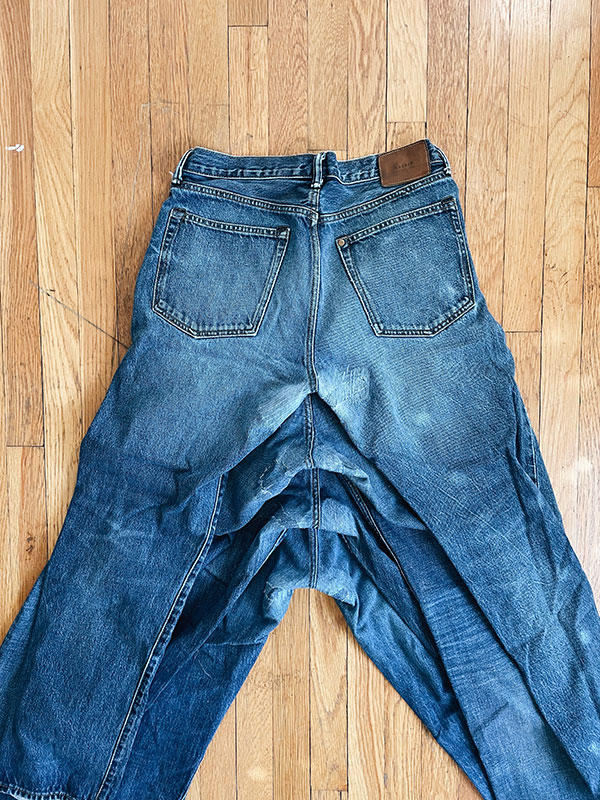
Taylor: What's something that you would say to someone who's interested in fixing up something old, but it's too scared to mend it for whatever reason they may have?
Alyx: I would just say that fabric is really resilient, it's not like paper—it’s woven, and you can stick a needle in it and take it out, and you can kind of move the fabric around or the yarn around, and it'll go back to the way that it was. There's really not a lot you can do, unless you cut it up, to mess it up. So I would say, play around with it! You can make little tiny knots, and you can use little tiny needles, and you can stitch it.
Just try it. And if it looks kind of wonky, that just adds to the history of that piece. I have so many vintage pieces of clothes that have crazy stitches on them that sometimes I'll take out because they are not really doing any help to the piece. But a lot of the times I'll keep them in, because that's just another person who worked on fixing this garment or this piece. They may not have had as good of craft as me, or their knots may have come undone over the last 50 years or whatever.
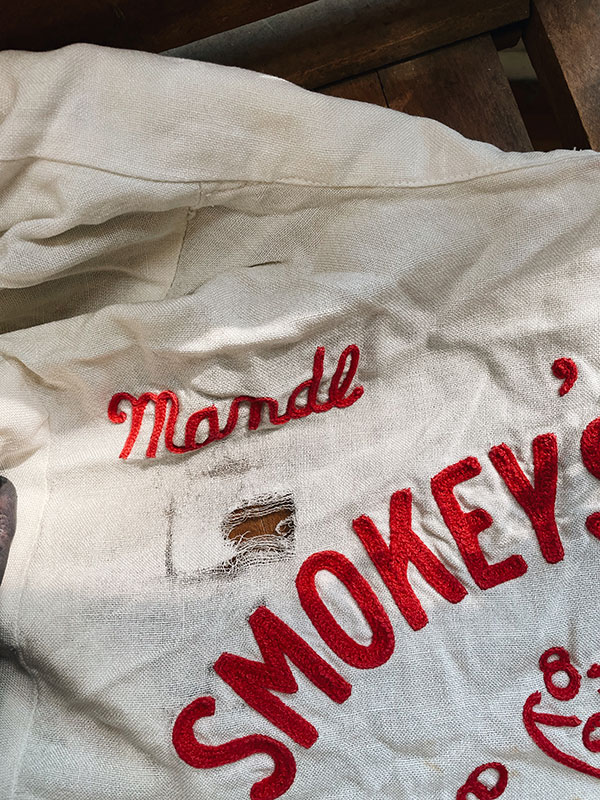
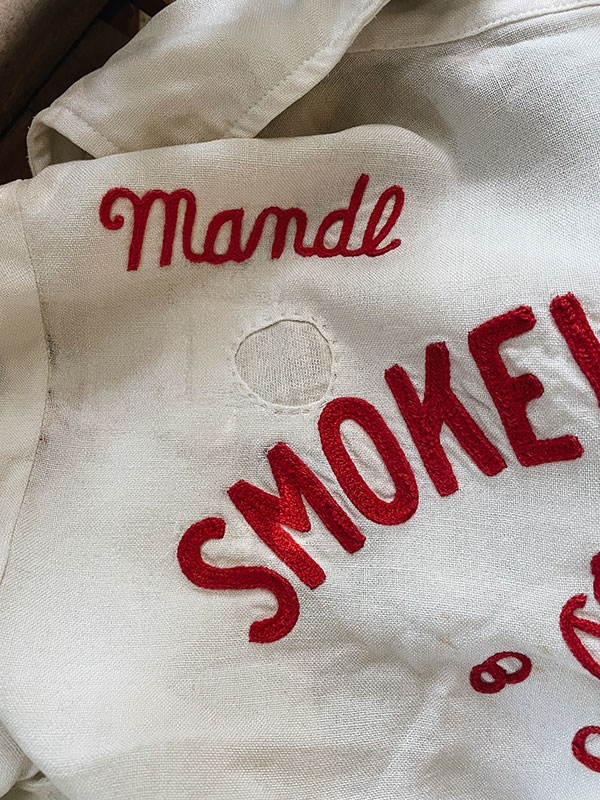
Taylor: We live in a very fast-paced, consumer-oriented world, especially when it comes to fashion. So what makes you want to sit down and fix something rather than going out and buying something that would function the same?
Alyx: I think my dad asks me this question a lot. He's probably my biggest critic in the way that he just doesn't get it. To him, and lots of people, time is money.
I do see it as part of my studio practice. That also helps get my creative juices flowing—I‘m stitching and I'm solving problems. That's a huge part of it for me. So that's one facet of it.
But the idea that something has one little tiny tear in it and it's ruined forever is completely insane to me. If your faucet wasn't working in your house, you wouldn't throw the whole house away, you would repair it. Maybe you would try to repair it yourself and it might continue leaking, and you have to do it a few more times or you spend a little bit more money and you have somebody else do it, and you can continue using it as it once was. So I think that we have all been forced into this kind of mindset of convenience.
And yes, it is probably more inconvenient to make a pile of clothes that need to be repaired in the corner of your room then reach out to somebody [to mend them], then drop it off on their porch, and then wait a few weeks [for the mends to be done], and then pick it up and pay money to have that piece back.
But I think if you really love your clothes…changing the mindset is really what I would love to do for people, which is hard. Getting rid of that mentality that everything is replaceable—which is just the consumerism mentality that we all have as Americans now—is what I am really trying to change in my life.
Love the article? Pin it for later.
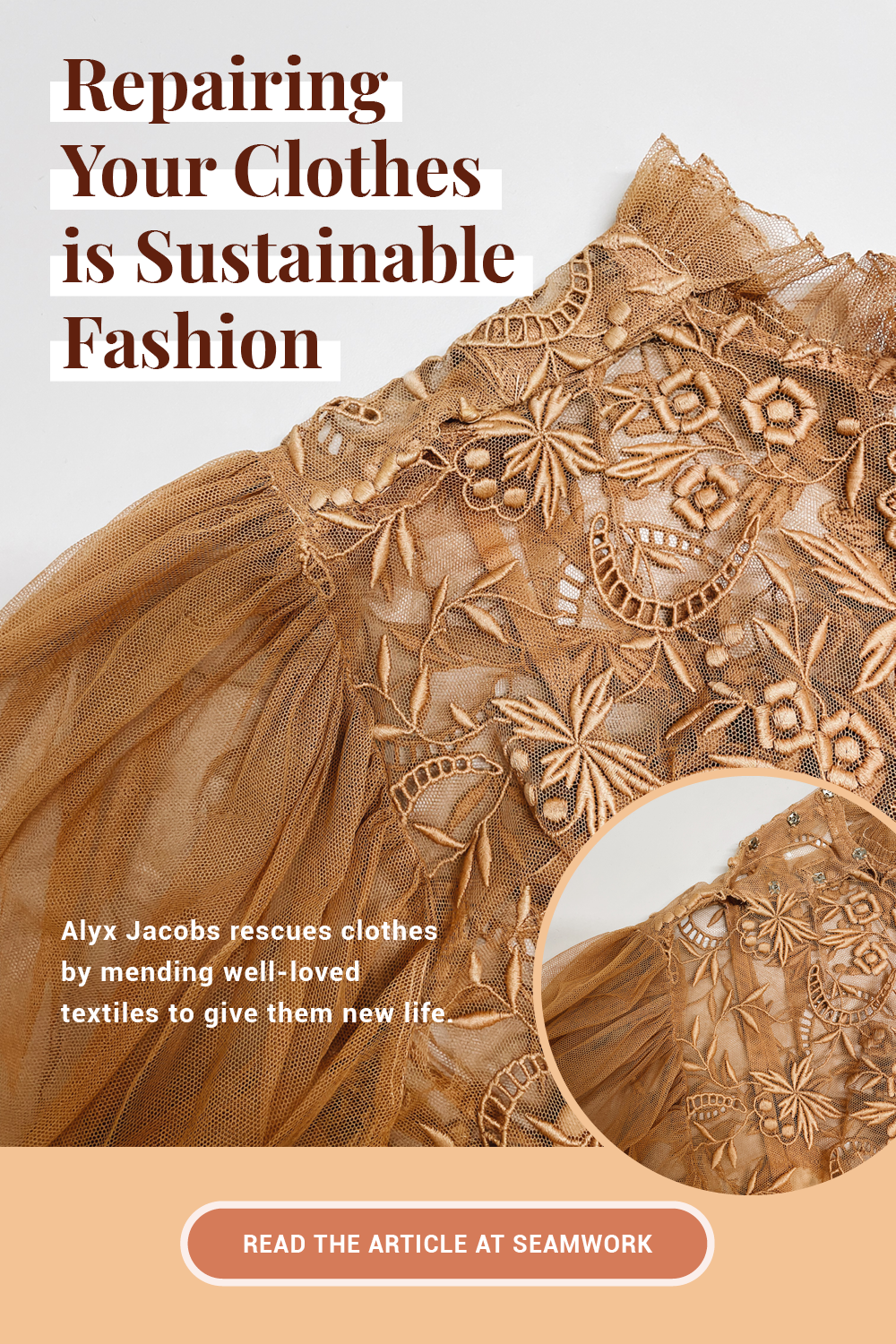
You can find all the beautiful things Alyx creates on instagram at @alyxjacobs and learn more about her local workshops on her website.


